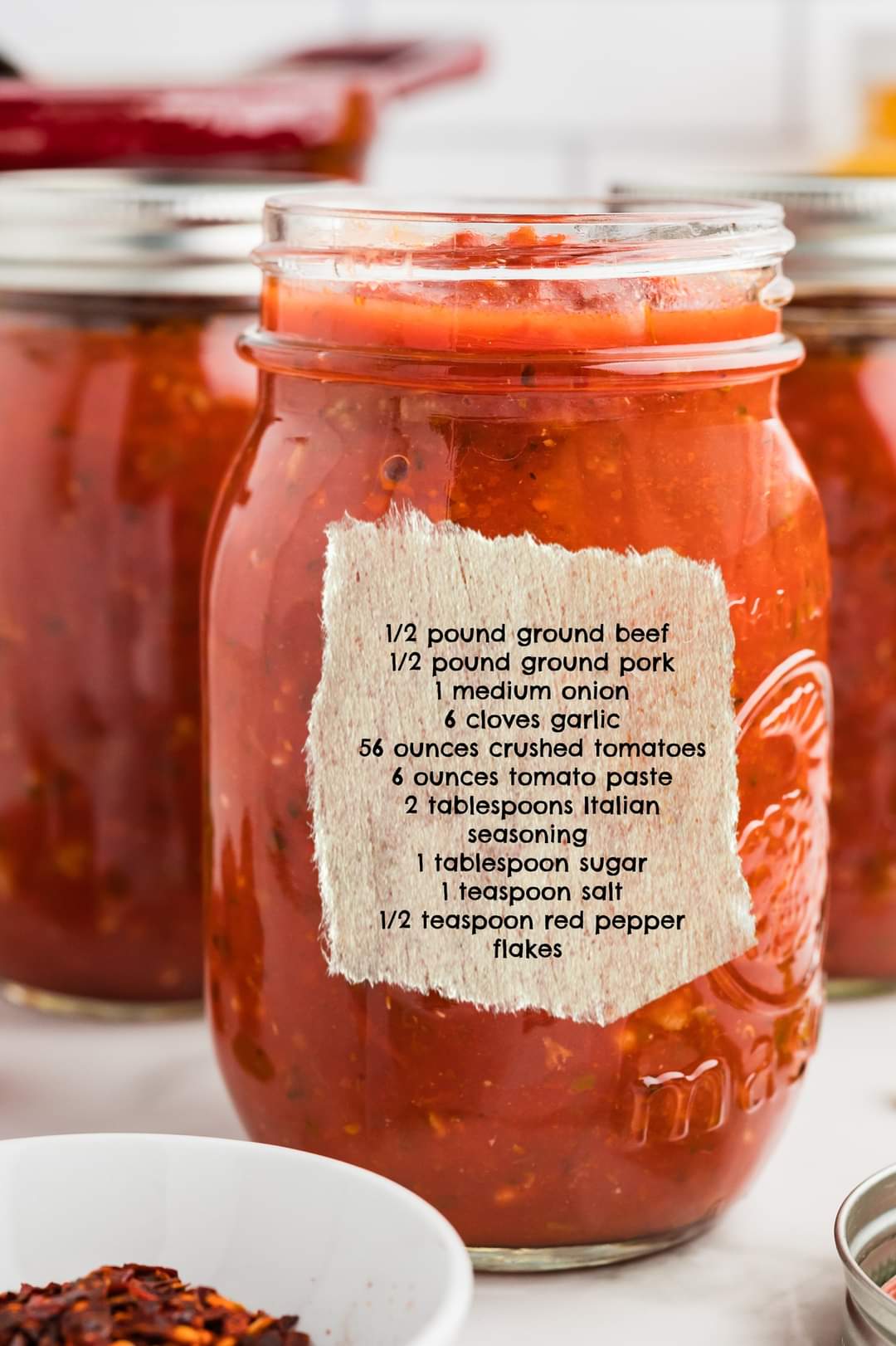
Homemade Spaghetti Sauce Recipe
History
Spaghetti sauce, also known as marinara sauce, has deep roots in Italian cuisine. The term “marinara” comes from the Italian word “marinaro,” meaning “of the sea,” although the sauce itself contains no seafood. It is believed that marinara sauce was created by Italian sailors who used tomatoes as a base for their meals while at sea, as tomatoes are rich in vitamin C and help prevent scurvy. Over time, the recipe evolved, and today it is a staple in Italian-American households, each with its own unique twist.
Benefits
Homemade spaghetti sauce offers several benefits:
- Nutritional Value: Rich in antioxidants like lycopene from tomatoes, which is linked to reduced risk of certain diseases.
- Control Over Ingredients: Making your own sauce allows you to control the quality of ingredients, ensuring it’s free from preservatives, excessive salt, or sugar found in many store-bought versions.
- Customizable: You can adjust the seasoning and ingredients to your family’s taste preferences, whether it’s adding more garlic, fresh herbs, or making it vegetarian.
Ingredients
- 2 tbsp olive oil
- 1 large onion, diced
- 5 cloves garlic, minced
- 2 cans (28 oz each) crushed tomatoes
- 1 can (6 oz) tomato paste
- 1 can (15 oz) tomato sauce
- 1/2 cup water
- 2 tbsp sugar (optional, to cut acidity)
- 1 tbsp dried basil
- 1 tsp dried oregano
- 1 tsp dried parsley
- 1/2 tsp red pepper flakes (optional for spice)
- Salt and pepper to taste
- 1/4 cup chopped fresh basil (optional for garnish)
- 1/4 cup grated Parmesan cheese (optional)
Method
- Sauté the Aromatics:
- In a large pot, heat olive oil over medium heat.
- Add diced onions and sauté until they become translucent, about 5-7 minutes.
- Stir in the minced garlic and cook for another minute until fragrant, being careful not to burn the garlic.
- Add the Tomatoes:
- Stir in the crushed tomatoes, tomato paste, and tomato sauce into the pot.
- Add water to the mixture and stir to combine. This helps in creating the desired sauce consistency.
- Season the Sauce:
- Add sugar, dried basil, oregano, parsley, red pepper flakes, salt, and pepper.
- Stir well to ensure all the seasonings are evenly distributed.
- Simmer the Sauce:
- Bring the sauce to a boil, then reduce the heat to low.
- Cover and let it simmer for at least 1.5 to 2 hours, stirring occasionally. The longer it simmers, the more the flavors will develop.
- Adjust the Seasoning:
- Taste the sauce and adjust seasoning as needed. If it’s too acidic, you can add a bit more sugar. For a richer flavor, you can also add a splash of red wine.
- Final Touches:
- If using, stir in fresh basil and grated Parmesan cheese just before serving.
- Serve:
- Toss the sauce with your favorite cooked pasta, or use it as a base for other Italian dishes like lasagna or baked ziti.
Tips for Success
- Use Quality Tomatoes: The quality of tomatoes can make or break your sauce. San Marzano tomatoes are often recommended for their sweetness and low acidity.
- Simmer Low and Slow: The key to a deep, rich flavor is slow simmering, allowing the flavors to meld together over time.
- Customize to Taste: Feel free to add other ingredients like sautéed mushrooms, bell peppers, or ground meat for a more robust sauce.
Storing and Freezing
- Refrigerator: The sauce can be stored in an airtight container in the refrigerator for up to 4-5 days.
- Freezing: For longer storage, let the sauce cool completely and freeze in portioned containers for up to 3 months. Thaw in the refrigerator overnight before reheating.
This homemade spaghetti sauce is not only a family favorite but also a versatile base that can be used in various Italian dishes, making it a must-have recipe in your cooking repertoire!